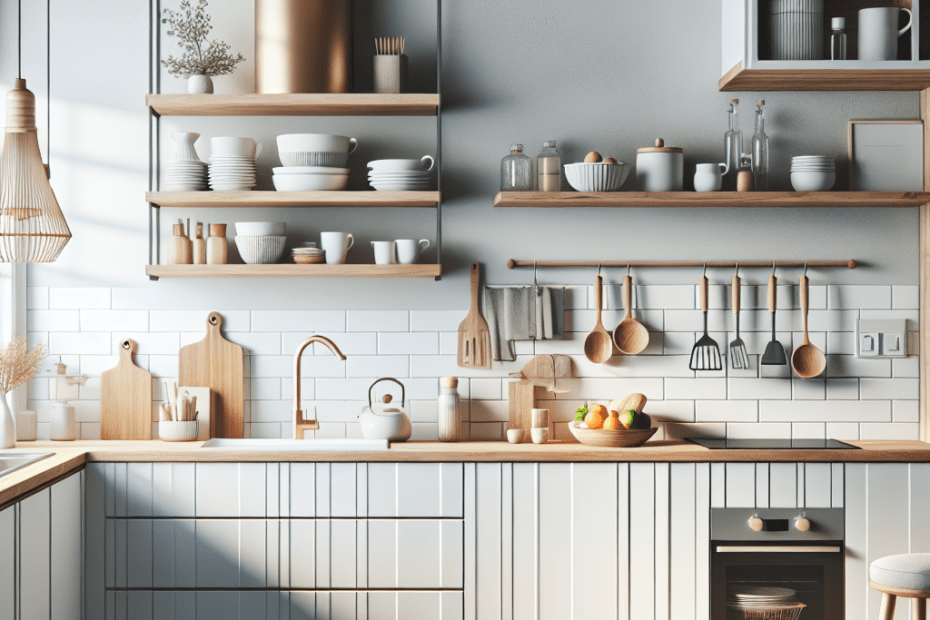Embracing the Simplicity of Scandinavian Kitchen Design
When one thinks of designing a cozy kitchen, the Scandinavian style often comes to mind, revered for its simplicity, functionality, and warmth. Steeped in a philosophy that embraces minimalism and practical beauty, many homeowners have adopted the aesthetic. Focusing on using muted colors, natural materials, and clean lines, a Scandinavian Kitchen Design aims to create spaces that are not only visually appealing but also inviting and functional.
Understanding the Essence of Scandinavian Design
Scandinavian design is celebrated for its minimalistic yet warm approach. When one delves into the roots of this design perspective, they often consider factors such as light, nature, and simplicity. The use of neutral color palettes, like whites, grays, and earthy tones, is prevalent. According to a study by ArchDaily, over 60% of interior designers recommended the Scandinavian style for open plan homes because of its versatile nature and ability to enhance light in space.
Key Features of a Scandinavian Kitchen
To create the perfect Scandinavian kitchen, they should focus on integrating these fundamental features:
| Feature | Description |
|---|---|
| Neutral Color Palette | Embrace whites, grays, and beige to keep the kitchen calming and open. |
| Natural Materials | Wooden cabinets and stone countertops bring warmth and texture. |
| Functional Layout | Optimize space with simple, clean lines that ensure practicality. |
| Minimalistic Design | Maintain clutter-free surfaces and integrated storage solutions. |
| Ample Lighting | Utilize natural light where possible, paired with sleek lighting fixtures. |
Steps to Designing a Scandinavian Kitchen
They can follow these steps to transform any kitchen into a cozy Scandinavian retreat:
1. Declutter and Simplify
Start by removing unnecessary items and focusing on essentials. In Scandinavian spaces, “less is more.” Open shelves can replace cabinets to create an airy feel.
2. Choose the Right Materials
Opt for sustainable materials like wood and stone. These elements not only add a touch of nature but ensure longevity and durability.
3. Incorporate Functional Design
Focus on functionality without sacrificing style. Think about how each space will be used and ensure that every element has a purpose.
4. Play with Lighting
Good lighting is essential. Natural light should be maximized, and when that’s insufficient, strategically placed pendant lights or modern fixtures can enhance the kitchen’s ambiance.
5. Use Muted Colors
Soft, muted colors create a serene and cohesive environment. While whites are quintessential, subtle pops of color through plants or textiles can add charm.
Integrating Modern Technology with Scandinavian Aesthetics
Even as they embrace traditional Scandinavian design, incorporating modern technology doesn’t have to disrupt this harmony. Sleek, energy-efficient appliances can be seamlessly integrated into the kitchen space, maintaining the clean lines and minimalistic ideals of Scandinavian design. According to Statista, 42% of kitchen renovations now include smart home features, blending innovation with existing design principles.
Key Takeaways
- Scandinavian kitchen design focuses on simplicity, functionality, and natural materials.
- Neutral color palettes are essential to create a calm and inviting atmosphere.
- Integrating modern technology can blend well with traditional design principles.
- Good lighting and smart use of space enhance the overall feel of the kitchen.
FAQ
- Why is Scandinavian kitchen design so popular?
Scandinavian kitchen design is popular because it combines functionality, simplicity, and a welcoming atmosphere, making it ideal for modern homes.
- Can bold colors be used in a Scandinavian kitchen?
While bold colors aren’t typical, they can be used sparingly as accents to add personality without overwhelming the space.
- Are Scandinavian kitchens expensive to design?
Scandinavian kitchens can be budget-friendly by focusing on essential, high-quality materials and avoiding unnecessary embellishments.
- What types of flooring work best in a Scandinavian kitchen?
Wooden floors or tiles in neutral tones work best, as they complement the overall aesthetic while being durable.
- How can one add warmth to their Scandinavian kitchen?
Warmth can be added through natural materials, soft textiles, and the incorporation of greenery.
